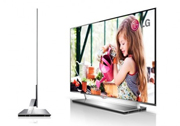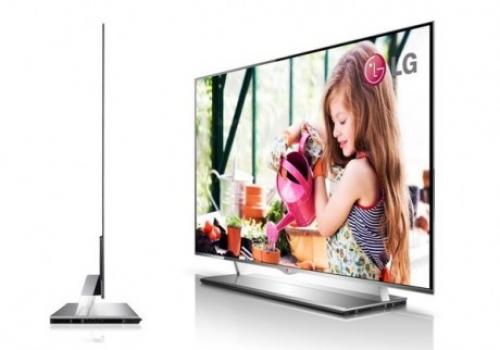LG makes £420m investment in OLED TV panel manufacturing
New line to be in mass-production next year, could produce over 150,000 50in+ screens a month


Its first OLED TV to hit the shops may be having a slow take-off, with just over 100 of the 55in sets so far ordered in six weeks in Korea, but LG's display division is clearly thinking big: it's just announced an investment of over £420m to get mass-production of the next-generation screens up and running.
It's spending KRW706bn on a new eighth-generation OLED TV line at its massive plant in Paju, north-west of Seoul, and aims to have the facility churning out screens in the first half of 2014, when it will have a capaciity of 26,000 input sheets per month.
2m screens a year
What does 26,000 input sheets mean? Well, eighth-generation glass involves sheets 2.2x2.5m, and these can yield six 55in screens apiece, so the potential capacity of the new line is some 156,000 50in+ screens a month, or getting on for 2m a year.
It will use LG Display's WRGB evaporation process, creating screens with the usual red, green and blue elements plus an extra white sub-pixel, which LGD says gives its OLED screens better colour definition, and greater colour consistency over a wide range of viewing angles.
The production process effectively involves the depositing of the image-forming materials on the glass by evaporating them and then passing them through fine masks onto the substrate.
The company also says its chosen process enhances productivity while also tackling screen lifespan concerns.
Get the What Hi-Fi? Newsletter
The latest hi-fi, home cinema and tech news, reviews, buying advice and deals, direct to your inbox.
It quotes market analyst DisplaySearch as predicting that the market for OLED TVs – which combine high resolution, self-illuminating technology (unlike LCD TVs, which require backlighting, usually using LEDs these days) and an ultra-thin profile – will start slowly, but experience dramatic growth next year.
It's expected to be worth £2bn by 2015.
Andrew has written about audio and video products for the past 20+ years, and been a consumer journalist for more than 30 years, starting his career on camera magazines. Andrew has contributed to titles including What Hi-Fi?, Gramophone, Jazzwise and Hi-Fi Critic, Hi-Fi News & Record Review and Hi-Fi Choice. I’ve also written for a number of non-specialist and overseas magazines.
